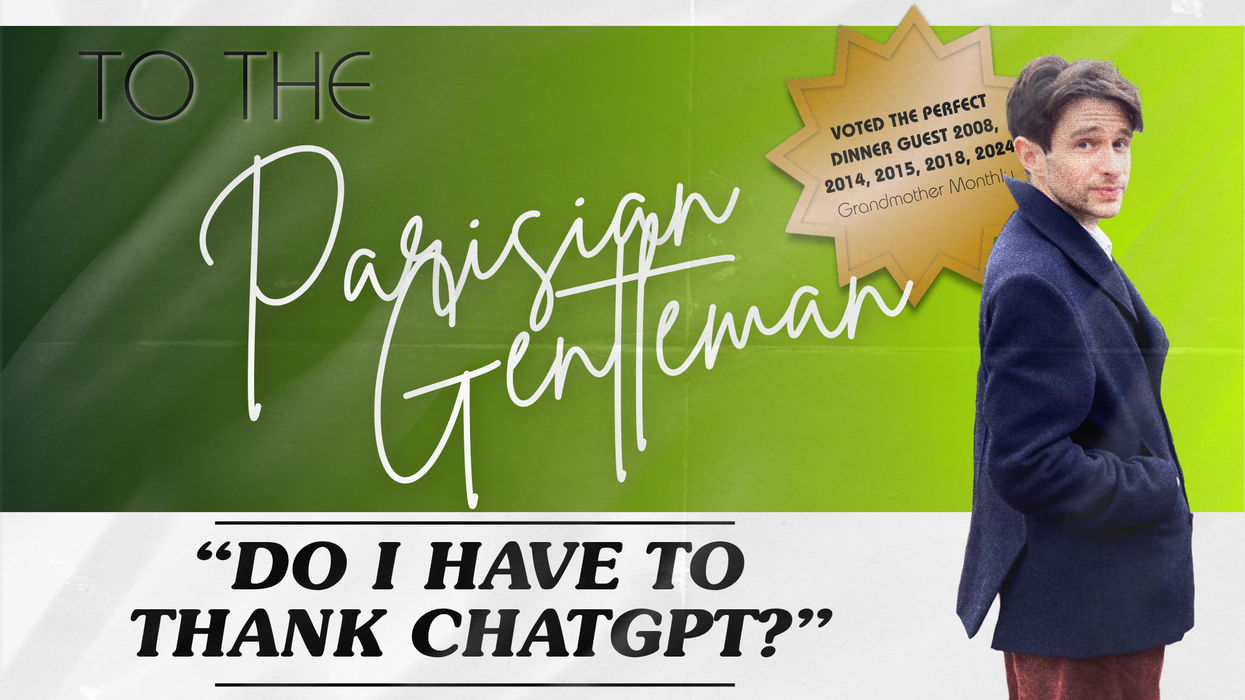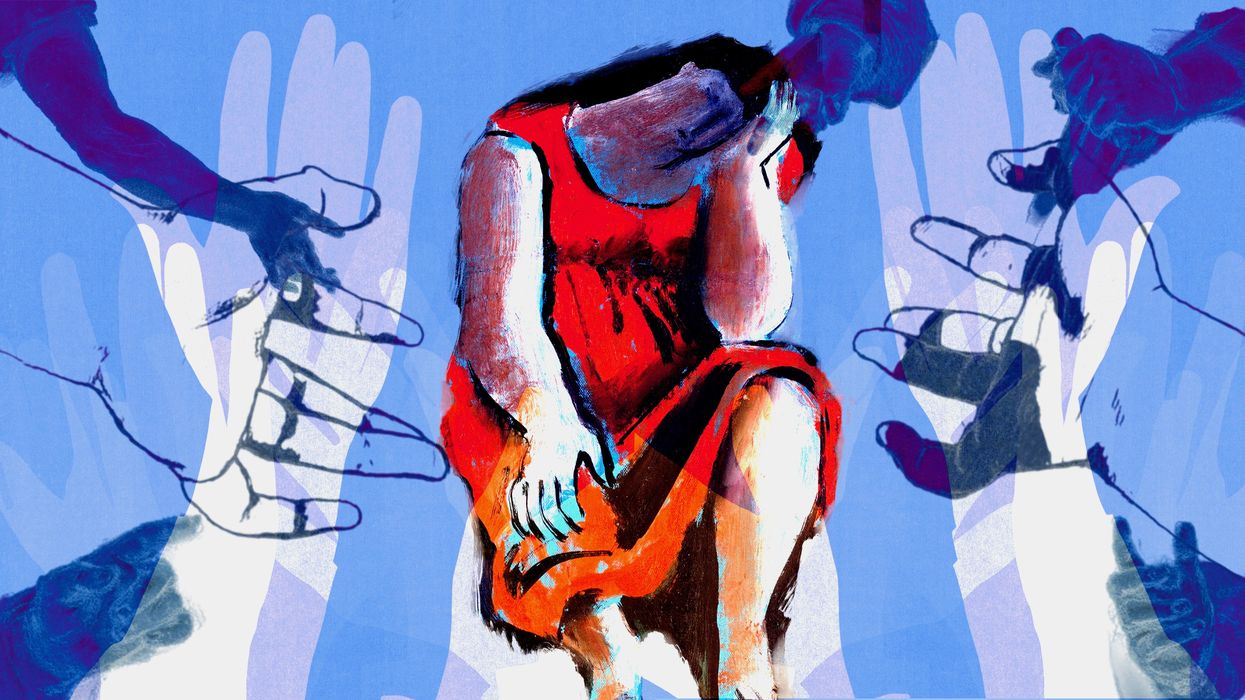Every few days, Elle (she/it) ships out a batch of small vials, affixed with a label that reads "Come and Take It.” Inside is liquid estrogen, distributed pay-what-you-can by her grassroots project, Elle’s HRT Repository, which is just one piece of a growing underground network. Because in the face of mounting attacks on gender-affirming health care, an increasing number of trans and gender-fluid people are bypassing clinics and doctors to get what they need. And in this political climate, one of the biggest things they’re looking for is D.I.Y. hormone replacement therapy (HRT).
HRT is an endocrinological treatment used by trans and gender-fluid folks to achieve outward secondary sex characteristics better aligned with gender identity. By using hormones or hormone blockers to treat their gender dysphoria, many see an increase in quality of life and mental well-being, in addition to decreased risks of depression, substance misuse, and suicide.
But even with the support of major medical organizations like the American Medical Association (AMA) and American Psychiatric Association (APA), HRT is difficult to get. Between high cost, insurance hurdles and discrimination in health care, many trans people are blocked from the care they need. So in some cases, the community has taken matters into its own hands via D.I.Y. HRT, which Emily Short* (she/they) says will “save present and future lives.”
When Emily worked in trans health care, she spent her days helping patients access gender-affirming HRT. But even as she advocated for greater access within the system, she kept hearing stories from patients who’d turned to D.I.Y. for a myriad of reasons. She understood why, but when she began transitioning, she was understandably hesitant to do her own HRT outside of a doctor’s care. But when she lost her job, and with it, her health benefits, the same path she’d once viewed cautiously now made the most sense. And so “making the decision to start D.I.Y. wasn’t difficult,” she says. Especially knowing that it’s “an important tool for our community to prevent harm from lack of access to any care.”
As health communications expert Dr. Brianna C. August-Rae (she/her) explains, D.I.Y. HRT can be viewed as a form of harm reduction — or a practical strategy for reducing negative consequences of being denied gender-affirming care — as it mitigates the ramifications of gender dysphoria. While conducting interviews for her qualitative study on D.I.Y. HRT, she recalls several people talking about gender dysphoria creating “a life or death situation,” particularly among trans and gender-fluid minors experiencing an even greater lack of support.
Because while some low-cost or free clinics do provide adequate care, they’re few and far between, especially for those who live in rural areas or red states. Many trans people also face financial barriers, including higher rates of poverty, unemployment, and being uninsured. And even if they are insured, one study noted that insurance companies are more likely to deny claims for gender-affirming care, or delay treatment with a long referral process, psychological evaluations, and other disaffirming requirements.
Beyond institutional barriers, many trans and gender-fluid people also face a lack of informed and compassionate care. Transphobic providers are still common, and even well-meaning doctors often have little training in transgender health. According to both Elle and Emily, this knowledge gap stems from the historic destruction of past medical knowledge by hate groups like the Nazis, with Dr. August-Rae also noting the ongoing failures in medical school curricula.
“A lot of medical schools aren’t covering gender-affirming care or trans health needs. There’s a very limited understanding of this particular area of medicine,” she says, adding they also forget that there’s a lived human experience attached to existing as a trans or gender-fluid person.
She notes that medical professionals typically think about risk purely in statistical terms, like the odds of having an adverse reaction. “But risk to many trans people is not so limited,” as Dr. August Rae says, “Risk might look like, ‘There's only one endocrinologist in my area, and if I go… in my small town, people are going to find out, and I will be outed.’”
That’s not to dismiss the training and knowledge doctors do possess, nor does it ignore the inherent risks that any D.I.Y. medical treatment has. However, in Dr. August-Rae’s opinion, the bigger issue is medical professionals who don’t grasp “how the risk of not living authentically is higher than the risk of a side effect,” especially given how surprisingly informed the D.I.Y. community is.
“Lots of the [trans] folks I talked to were extremely well-informed about all the different dosages, medications, and how it all fits together,” as Dr. August-Rae says. Meanwhile, Emily echoes this statement, saying that “the D.I.Y. community works individually to understand our own data, bodies, and experiences, [while also coming] together as a community to share this information.”
One example of this community care is Elle’s HRT Repository, which is a donation-powered service operated over Signal. Through her HRT Repository, Elle sends a form of estrogen called estradiol enanthate to adult trans femmes across the country, with one bottle typically lasting a single person at least a year.
She describes the synthesization process as surprisingly easy. With the help of a licensed pharmacist, a reliable source of estradiol powder, and regular third-party testing, she says “there’s not a lot of danger,” so long as her clients follow her recommendations and the advice of community-vetted websites, which provide thorough instructions and background information.
“It’s just like, ‘Hey, if you notice anything off during your self-exams, or if you notice a very erratic change in mood that’s not normal with whatever your hormonal cycle is after starting the injections, then go in and get intermediate testing done,’” it explains, adding that “everyone is on a standardized dose that makes an [unsafe level of estrogen] almost impossible to reach.”
According to Elle, the project is also “entirely legal,” as there’s no law banning the possession of estradiol enanthate or other forms of estrogen, which are regularly prescribed as hormonal contraception for cis women. She sees her work as operating under the widely accepted medical principle of informed consent, which is the disclosure of benefits, risks, and alternatives so patients can make their own decisions about their health.
Created in direct response to the current administration’s ongoing attacks on gender-affirming health care and the pre-existing lack of adequate care, services like Elle’s are literal life-savers as already hard-to-obtain hormones become harder to find. So far, there have been 115 fulfilled requests since the project started, with the number steadily growing since right-wing groups have started targeting clinics and the White House began introducing legislation that would severely impact accessibility. This includes a recent proposal preventing insurers from considering gender-affirming care an essential health benefit in ACA plans.
Meanwhile, red states are starting to crack down on LGBTQ+ health care, with several states actively trying to ban or severely limit gender-affirming health care. It’s made D.I.Y. “all but mandatory” in certain places, per one of Elle’s clients named Jelly (she/they), who points out that “closing state avenues to care… just forces people into back-alley markets.”
“Unless serious inroads are made into bridging the cost, locality, and other institutional barriers, this is what the future of all medical care will look like, not just gender affirmation or sexual health,” she says.
Another client, Indigo* (he/she), lives in Georgia and has been struggling to access estrogen, despite being on hormonal therapy for her endometriosis since he was 12. It’s given her a better understanding of how essential hormones are for a number of medical reasons, including gender-affirming care, which she says “should be accessible to everyone,” as it’s “something people need to literally live.”
“To make someone do something the hard way when you can make it easy [is] evil,” he says. “However, I am glad there are people who take it upon themselves to help others with D.I.Y. HRT.”
Beyond access, some turn to D.I.Y. HRT for the community it offers as a source of knowledge and support based on personal experience. Through online forums, resource sites, and Discord servers, trans people swap advice on dosages, safe usage, and the science behind HRT. For Jelly, this communal care has been “shockingly positive.”
Similarly, Emily says that while “D.I.Y. HRT also supports the community in understanding itself,” adding that “while the inherent risk of this is apparent, [D.I.Y.] provides a much deeper understanding for individuals… because knowing what is happening to your body as you take it is entirely your responsibility.”
And as gender-affirming care is getting more and more difficult to access, the idea of bodily autonomy is only getting more important – a fact that Emily believes explains the DIY movement’s growth.
“Doctors also don’t explain things in as much detail to many individuals with prescriptions [though this isn’t true across the board],” she says.
“As the D.I.Y. community works individually to understand our own data, bodies, and experiences, we also come together as a community to share this information,” Emily continues. “It helps to provide new ideas, resources, and goals over time. All of this information is being done as it once was, and shouldn’t need to be in today’s age.“
*Names have been changed for privacy.



![[10/10] La Chimera: A Dreamlike Descent Into Grief, Memory and Myth](https://vextmagazine.com/media-library/image.png?id=61454821&width=1245&height=700&quality=90&coordinates=0%2C0%2C1%2C0)












